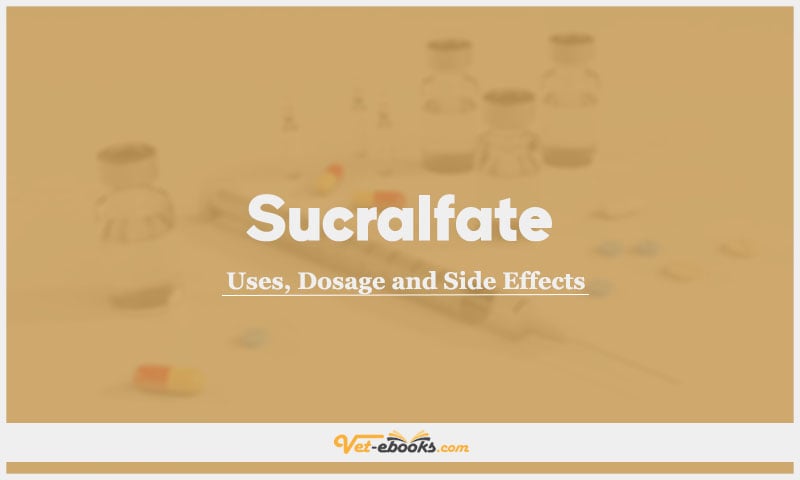Sucralfate In Dogs & Cats: Uses, Dosage and Side Effects

Overview
- In an acidic medium, aluminum ion detachment occurs from the compound.
- The detached ion is very polar and relatively non-absorbable.
- This ion binds to proteinaceous exudates in the upper GI tract.
- Forms a chemical diffusion barrier over ulcer sites, preventing further erosion from acid, pepsin, and bile salts.
- Major action involves stimulating mucosal defenses and repair mechanisms.
- Stimulation includes bicarbonate and PGE production and binding of epidermal growth factor.
- These effects are observed at neutral pH.
Uses of Sucralfate
- Treatment of oesophageal, gastric and duodenal ulceration.
- The efficacy of sucralfate as a phosphate binder in renal failure is uncertain.
- Can be used alongside an H2 receptor antagonist or proton-pump inhibitor but should be given separately.
Dose of Sucralfate in Dogs and Cats
Dogs:
- All uses: 500 mg/dog p.o. q6–8h (dogs up to 20 kg); 1–2 g/ dog p.o. q6–8h (>20 kg).
Cats:
- All uses: 250 mg/cat p.o. q8–12h.
Drug Dosage Calculator
You Should Give:
Side Effects of Sucralfate in Dogs and Cats
- Minimal; constipation is the main problem in humans.
- Bezoar formation and hypophosphataemia are also reported in humans.
Contraindications of Sucralfate in Dogs and Cats
- Perforated ulcer.
Some Notes:
- Sucralfate may decrease the bioavailability of H2 antagonists, phenytoin and tetracyclines.
- It may be a wise precaution to administer sucralfate at least 2 hours before or after
these drugs. - Sucralfate interferes significantly with the absorption of fluoroquinolones and digoxin.
Tip
Do You Want To Increase Your Veterinary Knowledge and Practical Skills?
You Can Now Browse and Download +3000 Books For Veterinary Professionals & Students Online.
Download Veterinary Books




















